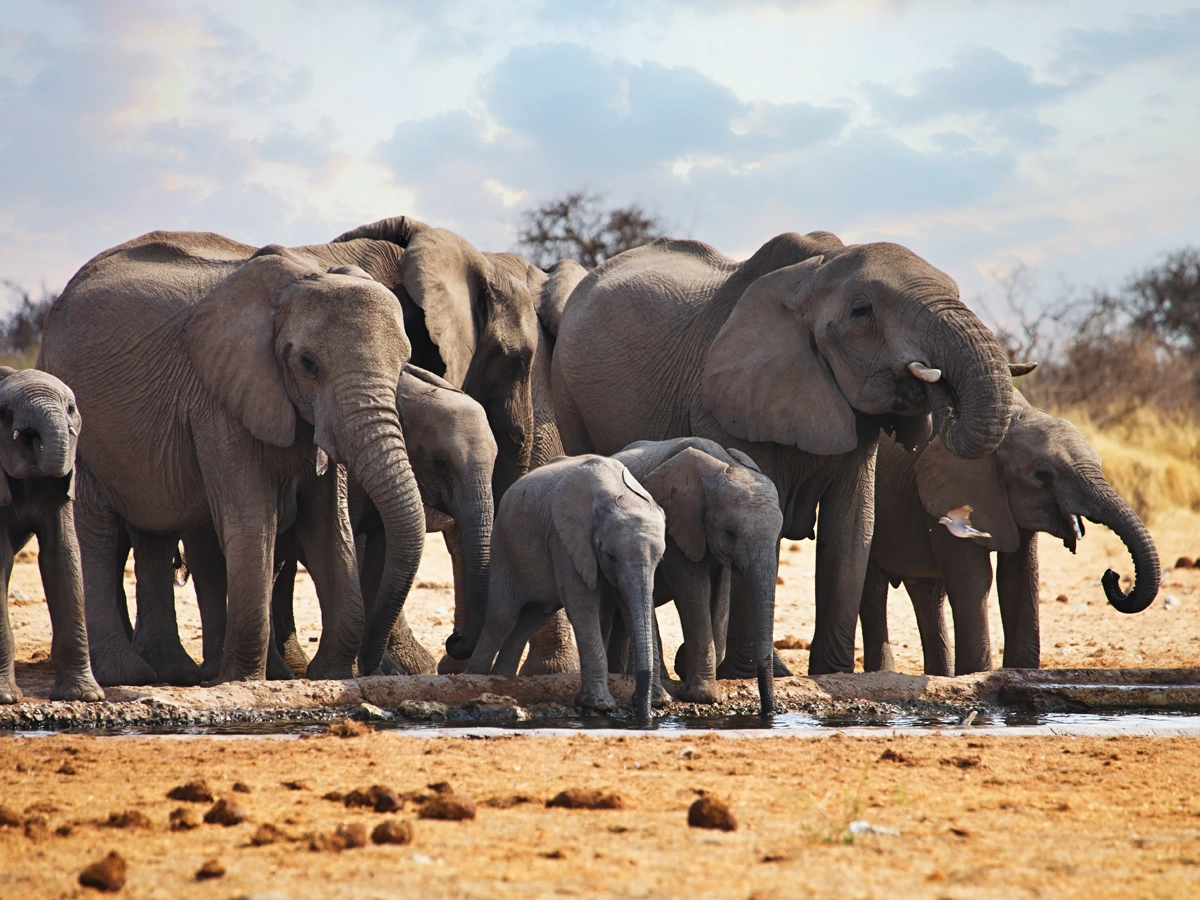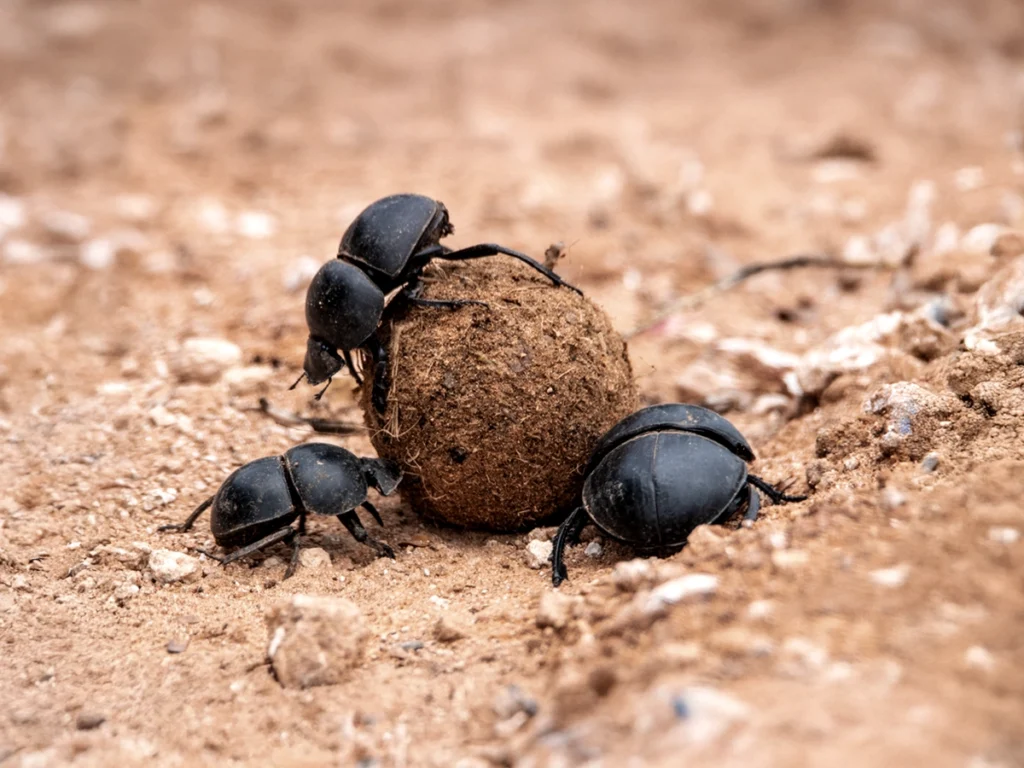
When you picture your dream Serengeti safari, you probably imagine majestic lions, thundering wildebeest migrations, or breathtaking sunsets over the vast plains. But what if we told you there’s a tiny, often-overlooked hero working tirelessly beneath the hooves and paws of the great and glamorous.
Welcome to the fascinating world of the dung beetle: the unsung savior of the savannah and a vital part of the Serengeti ecosystem. At One Nature, we believe in appreciating every aspect of this incredible wilderness, even the seemingly humble. And trust us – by the end of this, you’ll never look at dung the same way again!
Part of the fascinating scarab beetle family, over 100 different species of dung beetles thrive within the Serengeti National Park. They come in all shapes and sizes, from tiny specimens the size of your thumbnail to chunky rollers the size of a grape.
There are three main “lifestyles” among these diligent workers:
Their motto? “Waste not, want not.” And in the context of the Serengeti’s incredible biodiversity, it’s a motto that keeps everything humming.

Let’s do some quick, fascinating math. The Great Wildebeest Migration alone involves over 1.5 million wildebeests. Each wildebeest poops about 10 times a day. That’s a staggering 15 million poops – daily – and that’s not even counting zebras, gazelles, elephants, and many more!
Without our industrious dung beetles, the magnificent Serengeti landscape would become a literal “crapscape” – piles of drying, parasite-filled waste baking under the African sun. Imagine the smell!
Enter our miniature sanitation crew. Like efficient recycling trucks, they swoop in, scoop up the waste, and get to work. In doing so, they provide invaluable ecosystem services:
Put: No dung beetles = less grass, sicker animals, and fewer predators. The entire Serengeti food chain would begin to unravel. It’s a testament to the interconnectedness of Nature; even the smallest creatures play a massive role in safari conservation.
Do you think dung beetles are just mindless bugs? Think again! These tiny creatures are navigational geniuses.
Researchers have made astonishing discoveries: some dung beetles can navigate using the Milky Way! On moonless nights in the Serengeti, they climb onto their dung balls, perform a little “orientation dance,” and then roll off in a perfectly straight line, guided by the light of distant stars. Imagine navigating your entire world backward using only the constellations – that’s dung beetle precision!
This rolling isn’t just charming; it’s smart. They do it to quickly escape competition. Other beetles will happily steal a hard-won dung ball if you dawdle! It’s a daily race against time in the Serengeti wilderness.
If you’re picturing a slow, boring life for a dung beetle, you’re missing the action!
Fresh dung piles in the Serengeti are competitive battlegrounds. Dozens of beetles can arrive in seconds, fighting for the best bits. Males often battle fiercely over dung balls – and mates! One species even boasts two types of males: large, horned “fighters” who take on rivals directly and sneaky, hornless males who dig tunnels underneath to mate with females while the big guys are brawling above. It’s like a miniature soap opera playing out right underfoot during your Serengeti safari tours!
There’s even romance: a male may painstakingly roll a perfect dung ball and offer it to a female as a gift. If she approves (of both him and the ball), she climbs aboard, and they roll off together to begin their dung-filled life. A true Serengeti love story!
Despite their monumental importance, dung beetles face real threats. Climate change is altering rainfall patterns, which directly impacts when and where animals migrate – and, therefore, when dung is available. Overgrazing by livestock in surrounding areas, deforestation, and the use of chemical pesticides in agricultural zones all pose significant dangers to dung beetle populations.
When these unsung heroes disappear, the Serengeti ecosystem suffers silently. Fewer beetles mean more parasites, poorer soil, and, ultimately, sicker animals. It’s a ripple effect that most visitors never see, but it’s crucial for the long-term health of your Serengeti safari experience.
The Serengeti National Park is rightly described as one of Earth’s last great wildernesses – and it is. But its majesty doesn’t just come from roaring predators or endless migrations. It arises from the intricate harmony of the big and the small, the fierce and the fragile, the visible and the hidden.
Dung beetles remind us that even the humblest, overlooked creatures can shape an entire ecosystem. When you stay at One Nature, you’re not just witnessing a spectacle; you’re supporting the preservation of a complete, balanced world right down to its tiniest, most essential engineers.
So, next time you think Nature’s heroes have to be big and bold, remember this: some of the most critical work in the world is done in the dirt. And we’re proud to help protect their vital role in the Serengeti safari you’ll never forget.